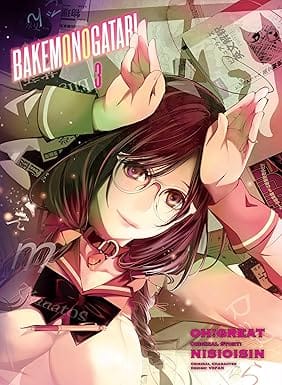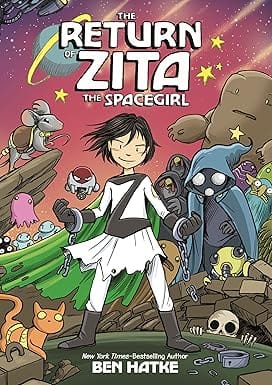WELCOME TO MIDLAND BOOK SHOP!
SHOP FOR
-
Contemporary Fiction
- Contemporary Fiction
-
Children
- Children
-
Comics & Graphic Novels
- Comics & Graphic Novels
-
Non-Fiction
- Non-Fiction
-
Fiction
- Fiction
Shop No.20, Aurobindo Palace Market, Hauz Khas, Near Church +91 9818282497 | 011 26867121
110016
New Delhi
IN
Midland The Book Shop ™
Shop No.20, Aurobindo Palace Market, Hauz Khas, Near Church +91 9818282497 | 011 26867121
New Delhi,
IN
+919871604786
https://www.midlandbookshop.com/s/607fe93d7eafcac1f2c73ea4/677cda367903fd013d69b606/without-tag-line-480x480.png"
[email protected]
9780143135722
62ff7db5dc4ffe77cbaea7d0
The Amazing Spider-man 1 (penguin Classics Marvel Collection)
https://www.midlandbookshop.com/s/607fe93d7eafcac1f2c73ea4/62ff7db7dc4ffe77cbaea828/51v57sx6vml-_sx363_bo1-204-203-200_.jpg
9780143135722
The Penguin Classics Marvel Collection presents the origin stories, seminal tales, and characters of the Marvel Universe to explore Marvel’s transformative and timeless influence on an entire genre of fantasy.
A Penguin Classics Marvel Collection Edition
Collects “Spider-Man!” from Amazing Fantasy #15 (1962); The Amazing Spider-Man #1-4, #9, #10, #13, #14, #17-19 (1963-1964); “Goodbye to Linda Brown” from Strange Tales #97 (1962); “How Stan Lee and Steve Ditko Create Spider-Man!” from The Amazing Spider-Man Annual #1 (1964). It is impossible to imagine American popular culture without Marvel Comics. For decades, Marvel has published groundbreaking visual narratives that sustain attention on multiple levels: as metaphors for the experience of difference and otherness; as meditations on the fluid nature of identity; and as high-water marks in the artistic tradition of American cartooning, to name a few.
This anthology contains twelve key stories from the first two years of Spider-Man’s publication history (from 1962 to 1964). These influential adventures not only transformed the super hero fantasy into an allegory for the pain of adolescence but also brought a new ethical complexity to the genre—by insisting that with great power there must also come great responsibility.
A foreword by Jason Reynolds and scholarly introductions and apparatus by Ben Saunders offer further insight into the enduring significance of The Amazing Spider-Man and classic Marvel comics.
The Deluxe Hardcover edition features gold foil stamping, gold top stain edges, special endpapers with artwork spotlighting series villains, and full-color art throughout.
A Penguin Classics Marvel Collection Edition
Collects “Spider-Man!” from Amazing Fantasy #15 (1962); The Amazing Spider-Man #1-4, #9, #10, #13, #14, #17-19 (1963-1964); “Goodbye to Linda Brown” from Strange Tales #97 (1962); “How Stan Lee and Steve Ditko Create Spider-Man!” from The Amazing Spider-Man Annual #1 (1964). It is impossible to imagine American popular culture without Marvel Comics. For decades, Marvel has published groundbreaking visual narratives that sustain attention on multiple levels: as metaphors for the experience of difference and otherness; as meditations on the fluid nature of identity; and as high-water marks in the artistic tradition of American cartooning, to name a few.
This anthology contains twelve key stories from the first two years of Spider-Man’s publication history (from 1962 to 1964). These influential adventures not only transformed the super hero fantasy into an allegory for the pain of adolescence but also brought a new ethical complexity to the genre—by insisting that with great power there must also come great responsibility.
A foreword by Jason Reynolds and scholarly introductions and apparatus by Ben Saunders offer further insight into the enduring significance of The Amazing Spider-Man and classic Marvel comics.
The Deluxe Hardcover edition features gold foil stamping, gold top stain edges, special endpapers with artwork spotlighting series villains, and full-color art throughout.
About the Author
Writer-editor Stan Lee (1922– 2018) and artist Jack Kirby made comic book history in 1961 with The Fantastic Four #1. The success of its new style inspired Lee and his many collaborators to develop a number of super heroes, including, with Jack Kirby, the Incredible Hulk and the X-Men; with Steve Ditko, the Amazing Spider- Man and Doctor Strange; and with Bill Everett, Daredevil. Lee oversaw the adventures of these creations for more than a decade before handing over the editorial reins at Marvel to others and focusing on developing Marvel’s properties in other media. For the remainder of his long life, he continued to serve as a creative figurehead at Marvel and as an ambassador for the comics medium as a whole. In his final years, Lee’s signature cameo appearances in Marvel’s films established him as one of the world’s most famous faces.
Steve Ditko (1927– 2018) began his comics career in the anthologies of the 1950s, where his unique style quickly earned him recognition and respect. He was recruited in 1958 to join Stan Lee’s Atlas Comics, which was later transformed into Marvel, where his talent for expressionistic caricature contrasted well with Jack Kirby’s gift for widescreen- style spectacle. In 1962, in the pages of Amazing Fantasy, Ditko and Lee brought to life Peter Parker, the Amazing Spider- Man, changing the industry forever. During the same period, he also co-created (with Lee) and plotted the first adventures of Doctor Strange. After leaving Marvel in 1966, Ditko drew the Blue Beetle and Captain Atom for Charlton Comics; the Creeper and Shade the Changing Man for DC Comics; and Mr. A., an independent creation whose black-and-white vision of morality reflected Ditko’s own political philosophy. Ditko returned to Marvel during the late 1970s and remained there for much of the 1980s, co-creating Speedball, the Masked Marvel, the Unbeatable Squirrel Girl, and other prominent characters.
Jason Reynolds is an award- winning and number one New York Times bestselling author. Reynolds’ many books include Miles Morales: Spider- Man; the Track series (Ghost, Patina, Sunny, and Lu); Long Way Down, which received a Newbery Honor, a Printz Honor, and a Coretta Scott King Honor; and Look Both Ways, which was a National Book Award Finalist. His latest book, Stamped: Racism, Antiracism, and You, is a collaboration with Ibram X. Kendi. Reynolds is the 2020– 2021 National Ambassador for Young People’s Literature and has appeared on The Daily Show with Trevor Noah, Late Night with Seth Meyers, and CBS This Morning. He is on the faculty of the MFA in Creative Writing Program at Lesley University and lives in Washington, DC. You can find his ramblings at jasonwritesbooks.com.
Ben Saunders is a professor of English at the University of Oregon. He is the author of Desiring Donne: Poetry, Sexuality, Interpretation and Do the Gods Wear Capes?: Spirituality, Fantasy, and Superheroes, as well as numerous critical essays on subjects ranging from the writings of Shakespeare to the recordings of Little Richard. He has also curated several museum exhibitions of comics art, including the record- breaking, multimedia touring show Marvel: Universe of Super Heroes— a retrospective exploring the artistic and cultural impact of Marvel Comics from 1939 to the present.
Steve Ditko (1927– 2018) began his comics career in the anthologies of the 1950s, where his unique style quickly earned him recognition and respect. He was recruited in 1958 to join Stan Lee’s Atlas Comics, which was later transformed into Marvel, where his talent for expressionistic caricature contrasted well with Jack Kirby’s gift for widescreen- style spectacle. In 1962, in the pages of Amazing Fantasy, Ditko and Lee brought to life Peter Parker, the Amazing Spider- Man, changing the industry forever. During the same period, he also co-created (with Lee) and plotted the first adventures of Doctor Strange. After leaving Marvel in 1966, Ditko drew the Blue Beetle and Captain Atom for Charlton Comics; the Creeper and Shade the Changing Man for DC Comics; and Mr. A., an independent creation whose black-and-white vision of morality reflected Ditko’s own political philosophy. Ditko returned to Marvel during the late 1970s and remained there for much of the 1980s, co-creating Speedball, the Masked Marvel, the Unbeatable Squirrel Girl, and other prominent characters.
Jason Reynolds is an award- winning and number one New York Times bestselling author. Reynolds’ many books include Miles Morales: Spider- Man; the Track series (Ghost, Patina, Sunny, and Lu); Long Way Down, which received a Newbery Honor, a Printz Honor, and a Coretta Scott King Honor; and Look Both Ways, which was a National Book Award Finalist. His latest book, Stamped: Racism, Antiracism, and You, is a collaboration with Ibram X. Kendi. Reynolds is the 2020– 2021 National Ambassador for Young People’s Literature and has appeared on The Daily Show with Trevor Noah, Late Night with Seth Meyers, and CBS This Morning. He is on the faculty of the MFA in Creative Writing Program at Lesley University and lives in Washington, DC. You can find his ramblings at jasonwritesbooks.com.
Ben Saunders is a professor of English at the University of Oregon. He is the author of Desiring Donne: Poetry, Sexuality, Interpretation and Do the Gods Wear Capes?: Spirituality, Fantasy, and Superheroes, as well as numerous critical essays on subjects ranging from the writings of Shakespeare to the recordings of Little Richard. He has also curated several museum exhibitions of comics art, including the record- breaking, multimedia touring show Marvel: Universe of Super Heroes— a retrospective exploring the artistic and cultural impact of Marvel Comics from 1939 to the present.
Excerpt. © Reprinted by permission. All rights reserved.
Series Introduction
If you were suddenly gifted with powers that set you apart from ordinary humanity, what would you do?
For the first generation of comic book super heroes, launched in the late 1930s, the answer was obvious: You used your special abilities for the benefit of others. You became a "champion for the helpless and oppressed" and waged an "unceasing battle against evil and injustice."
It was a fantasy predicated on the effortless fusion of moral certainty with aggressive action, the national appetite for which only increased after America's entry into the Second World War in 1941. More than seven hundred super-powered do-gooders debuted in the boom years of 1938-1945. Collectively, they helped to transform the comic book business from a vestigial limb of print culture into a muscular arm of the modern entertainment industry. With the social tensions and abiding inequalities of US culture temporarily obscured by the Nazi threat, super heroes even came to emblematize the (sometimes contradictory) principles of individualism, democracy, and consumerism: the American way.
After the war, comics remained big business-the genres of romance, Western, crime, horror, and humor all thrived-but audiences turned decisively away from super heroes. Indeed, by the summer of 1953, the costumed crime-fighter appeared on the verge of extinction. Of the hundreds of characters that had once crowded the newsstands, only five still had their own titles: Quality Comics' Plastic Man and DC Comics' Superman, Superboy, Batman, and Wonder Woman. Old-fashioned products of a simpler time, they were ripe targets for satire. There were sporadic attempts to revive the craze, of course-most notably in 1954, when a wave of national hysteria over the putative effects of crime and horror comics on younger readers led several publishers to seek more parent-friendly alternatives. The companies of Ajax, Atlas, Charlton, Harvey, Magazine Enterprises, Prize, and Sterling all tried out a few super hero books in an effort to recapture a small portion of the market that they once had dominated. Significantly, all failed.
No single factor can definitively explain this shift in popular taste, but clearly times had changed. Against the background of the wasteful and inconclusive war in Korea, the vicious theater of McCarthyism, and the ugly response to the first stirrings of the civil rights movement in Montgomery, Alabama, the moral simplicity of the super hero fantasy looked na•ve at best and reactionary at worst. Clearly, if super heroes were going to be revived successfully, they would have to be reinvented.
The process began at DC Comics, the only American comic book publisher to have a real stake in the genre at the time, with the return of the Flash in mid-1956. Writer Bob Kanigher revised the concept (which dated back to 1940), adding a self-reflexive element; his hero, Barry Allen, had a nostalgic fondness for old Flash comics. Kanigher thereby acknowledged and incorporated DCÕs earlier Flash stories while simultaneously placing them at an ironic distance-making his own tale seem more authentic and contemporary. The summer of 1959 saw a similar modernization of the Green Lantern. The origin story of the first Lantern, from almost twenty years prior, had been a messy Orientalist hodgepodge; the new version drew on science fiction tropes more suited to the age of the space race. In late 1959, these revitalized heroes joined forces with Superman, Batman, and Wonder Woman to form a team: the Justice League of America.
The strong sales of the JLA made other publishers sit up and take notice. Among them was Martin Goodman, the owner of the company not yet known as Marvel. Goodman had enjoyed plenty of success with super hero comics in the 1940s and owned the rights to such former hits as Captain America, the Human Torch-somewhat misnamed, as he was actually a flame-powered android-and Namor the Sub-Mariner. (A true original, the Sub-Mariner was perhaps the only super-powered character of the first generation to regard ordinary humanity with open hostility.) But Goodman had canceled all his super hero books in 1949 to pursue more popular trends. Now, at the dawn of the '60s, half the titles in his comics division were romances or "teen humor" titles, while the other half was divided among war, Western, and "monster" books-anthologies that served up a different B-movie-style menace month after month-without a single super hero in the bunch.
Goodman decided that he needed a super team of his own on the shelves, fast, and assigned the job to a writer-editor named Stanley Lieber, better known today as Stan Lee. A cousin of Goodman's wife, Lee had joined the company in 1939 at the age of seventeen, rising to oversee Goodman's entire line. He'd grown up in the comic book industry, knew all its formulas and limitations, and longed to transcend them-but by his own account, he was starting to wonder if he ever would. When Goodman told him to create a copycat Justice League, Lee turned for help to Jack Kirby, a veteran artist who had co-created Captain America (among many other super heroes) with Joe Simon back in the 1940s. The result of their collaboration would be far more than a knockoff of the latest trend, however. Drawing inspiration from multiple sources, the two men managed to blend a whole new pop-cultural cocktail: a transformative take on the super hero. The comic was called The Fantastic Four, and in its pages, Lee and Kirby would also map out the basic contours of the Marvel Universe.
If you were suddenly gifted with powers that set you apart from ordinary humanity, what would you do?
For the first generation of comic book super heroes, launched in the late 1930s, the answer was obvious: You used your special abilities for the benefit of others. You became a "champion for the helpless and oppressed" and waged an "unceasing battle against evil and injustice."
It was a fantasy predicated on the effortless fusion of moral certainty with aggressive action, the national appetite for which only increased after America's entry into the Second World War in 1941. More than seven hundred super-powered do-gooders debuted in the boom years of 1938-1945. Collectively, they helped to transform the comic book business from a vestigial limb of print culture into a muscular arm of the modern entertainment industry. With the social tensions and abiding inequalities of US culture temporarily obscured by the Nazi threat, super heroes even came to emblematize the (sometimes contradictory) principles of individualism, democracy, and consumerism: the American way.
After the war, comics remained big business-the genres of romance, Western, crime, horror, and humor all thrived-but audiences turned decisively away from super heroes. Indeed, by the summer of 1953, the costumed crime-fighter appeared on the verge of extinction. Of the hundreds of characters that had once crowded the newsstands, only five still had their own titles: Quality Comics' Plastic Man and DC Comics' Superman, Superboy, Batman, and Wonder Woman. Old-fashioned products of a simpler time, they were ripe targets for satire. There were sporadic attempts to revive the craze, of course-most notably in 1954, when a wave of national hysteria over the putative effects of crime and horror comics on younger readers led several publishers to seek more parent-friendly alternatives. The companies of Ajax, Atlas, Charlton, Harvey, Magazine Enterprises, Prize, and Sterling all tried out a few super hero books in an effort to recapture a small portion of the market that they once had dominated. Significantly, all failed.
No single factor can definitively explain this shift in popular taste, but clearly times had changed. Against the background of the wasteful and inconclusive war in Korea, the vicious theater of McCarthyism, and the ugly response to the first stirrings of the civil rights movement in Montgomery, Alabama, the moral simplicity of the super hero fantasy looked na•ve at best and reactionary at worst. Clearly, if super heroes were going to be revived successfully, they would have to be reinvented.
The process began at DC Comics, the only American comic book publisher to have a real stake in the genre at the time, with the return of the Flash in mid-1956. Writer Bob Kanigher revised the concept (which dated back to 1940), adding a self-reflexive element; his hero, Barry Allen, had a nostalgic fondness for old Flash comics. Kanigher thereby acknowledged and incorporated DCÕs earlier Flash stories while simultaneously placing them at an ironic distance-making his own tale seem more authentic and contemporary. The summer of 1959 saw a similar modernization of the Green Lantern. The origin story of the first Lantern, from almost twenty years prior, had been a messy Orientalist hodgepodge; the new version drew on science fiction tropes more suited to the age of the space race. In late 1959, these revitalized heroes joined forces with Superman, Batman, and Wonder Woman to form a team: the Justice League of America.
The strong sales of the JLA made other publishers sit up and take notice. Among them was Martin Goodman, the owner of the company not yet known as Marvel. Goodman had enjoyed plenty of success with super hero comics in the 1940s and owned the rights to such former hits as Captain America, the Human Torch-somewhat misnamed, as he was actually a flame-powered android-and Namor the Sub-Mariner. (A true original, the Sub-Mariner was perhaps the only super-powered character of the first generation to regard ordinary humanity with open hostility.) But Goodman had canceled all his super hero books in 1949 to pursue more popular trends. Now, at the dawn of the '60s, half the titles in his comics division were romances or "teen humor" titles, while the other half was divided among war, Western, and "monster" books-anthologies that served up a different B-movie-style menace month after month-without a single super hero in the bunch.
Goodman decided that he needed a super team of his own on the shelves, fast, and assigned the job to a writer-editor named Stanley Lieber, better known today as Stan Lee. A cousin of Goodman's wife, Lee had joined the company in 1939 at the age of seventeen, rising to oversee Goodman's entire line. He'd grown up in the comic book industry, knew all its formulas and limitations, and longed to transcend them-but by his own account, he was starting to wonder if he ever would. When Goodman told him to create a copycat Justice League, Lee turned for help to Jack Kirby, a veteran artist who had co-created Captain America (among many other super heroes) with Joe Simon back in the 1940s. The result of their collaboration would be far more than a knockoff of the latest trend, however. Drawing inspiration from multiple sources, the two men managed to blend a whole new pop-cultural cocktail: a transformative take on the super hero. The comic was called The Fantastic Four, and in its pages, Lee and Kirby would also map out the basic contours of the Marvel Universe.
out of stock
INR
2399
1
1
Email ID already exists!
Your Current password is incorrect
Password Updated Successfully
Thanks for your Feedback
- Home
- Manga & Anime
- The Amazing Spider-man 1 (penguin Classics Marvel Collection)
The Amazing Spider-man 1 (penguin Classics Marvel Collection)
ISBN:
9780143135722
₹2,399
₹2,499
(4% OFF)
SIZE GUIDE
Back In Stock Shortly - Fill The Book Request Form
Sold By:
Hauz Khas - Aurobindo Market
Details
- ISBN: 9780143135722
- Author: Stan Lee
- Publisher: Penguin Classics
- Pages: 384
- Format: Hardback
Book Description
The Penguin Classics Marvel Collection presents the origin stories, seminal tales, and characters of the Marvel Universe to explore Marvel’s transformative and timeless influence on an entire genre of fantasy.
A Penguin Classics Marvel Collection Edition
Collects “Spider-Man!” from Amazing Fantasy #15 (1962); The Amazing Spider-Man #1-4, #9, #10, #13, #14, #17-19 (1963-1964); “Goodbye to Linda Brown” from Strange Tales #97 (1962); “How Stan Lee and Steve Ditko Create Spider-Man!” from The Amazing Spider-Man Annual #1 (1964). It is impossible to imagine American popular culture without Marvel Comics. For decades, Marvel has published groundbreaking visual narratives that sustain attention on multiple levels: as metaphors for the experience of difference and otherness; as meditations on the fluid nature of identity; and as high-water marks in the artistic tradition of American cartooning, to name a few.
This anthology contains twelve key stories from the first two years of Spider-Man’s publication history (from 1962 to 1964). These influential adventures not only transformed the super hero fantasy into an allegory for the pain of adolescence but also brought a new ethical complexity to the genre—by insisting that with great power there must also come great responsibility.
A foreword by Jason Reynolds and scholarly introductions and apparatus by Ben Saunders offer further insight into the enduring significance of The Amazing Spider-Man and classic Marvel comics.
The Deluxe Hardcover edition features gold foil stamping, gold top stain edges, special endpapers with artwork spotlighting series villains, and full-color art throughout.
A Penguin Classics Marvel Collection Edition
Collects “Spider-Man!” from Amazing Fantasy #15 (1962); The Amazing Spider-Man #1-4, #9, #10, #13, #14, #17-19 (1963-1964); “Goodbye to Linda Brown” from Strange Tales #97 (1962); “How Stan Lee and Steve Ditko Create Spider-Man!” from The Amazing Spider-Man Annual #1 (1964). It is impossible to imagine American popular culture without Marvel Comics. For decades, Marvel has published groundbreaking visual narratives that sustain attention on multiple levels: as metaphors for the experience of difference and otherness; as meditations on the fluid nature of identity; and as high-water marks in the artistic tradition of American cartooning, to name a few.
This anthology contains twelve key stories from the first two years of Spider-Man’s publication history (from 1962 to 1964). These influential adventures not only transformed the super hero fantasy into an allegory for the pain of adolescence but also brought a new ethical complexity to the genre—by insisting that with great power there must also come great responsibility.
A foreword by Jason Reynolds and scholarly introductions and apparatus by Ben Saunders offer further insight into the enduring significance of The Amazing Spider-Man and classic Marvel comics.
The Deluxe Hardcover edition features gold foil stamping, gold top stain edges, special endpapers with artwork spotlighting series villains, and full-color art throughout.
About the Author
Writer-editor Stan Lee (1922– 2018) and artist Jack Kirby made comic book history in 1961 with The Fantastic Four #1. The success of its new style inspired Lee and his many collaborators to develop a number of super heroes, including, with Jack Kirby, the Incredible Hulk and the X-Men; with Steve Ditko, the Amazing Spider- Man and Doctor Strange; and with Bill Everett, Daredevil. Lee oversaw the adventures of these creations for more than a decade before handing over the editorial reins at Marvel to others and focusing on developing Marvel’s properties in other media. For the remainder of his long life, he continued to serve as a creative figurehead at Marvel and as an ambassador for the comics medium as a whole. In his final years, Lee’s signature cameo appearances in Marvel’s films established him as one of the world’s most famous faces.
Steve Ditko (1927– 2018) began his comics career in the anthologies of the 1950s, where his unique style quickly earned him recognition and respect. He was recruited in 1958 to join Stan Lee’s Atlas Comics, which was later transformed into Marvel, where his talent for expressionistic caricature contrasted well with Jack Kirby’s gift for widescreen- style spectacle. In 1962, in the pages of Amazing Fantasy, Ditko and Lee brought to life Peter Parker, the Amazing Spider- Man, changing the industry forever. During the same period, he also co-created (with Lee) and plotted the first adventures of Doctor Strange. After leaving Marvel in 1966, Ditko drew the Blue Beetle and Captain Atom for Charlton Comics; the Creeper and Shade the Changing Man for DC Comics; and Mr. A., an independent creation whose black-and-white vision of morality reflected Ditko’s own political philosophy. Ditko returned to Marvel during the late 1970s and remained there for much of the 1980s, co-creating Speedball, the Masked Marvel, the Unbeatable Squirrel Girl, and other prominent characters.
Jason Reynolds is an award- winning and number one New York Times bestselling author. Reynolds’ many books include Miles Morales: Spider- Man; the Track series (Ghost, Patina, Sunny, and Lu); Long Way Down, which received a Newbery Honor, a Printz Honor, and a Coretta Scott King Honor; and Look Both Ways, which was a National Book Award Finalist. His latest book, Stamped: Racism, Antiracism, and You, is a collaboration with Ibram X. Kendi. Reynolds is the 2020– 2021 National Ambassador for Young People’s Literature and has appeared on The Daily Show with Trevor Noah, Late Night with Seth Meyers, and CBS This Morning. He is on the faculty of the MFA in Creative Writing Program at Lesley University and lives in Washington, DC. You can find his ramblings at jasonwritesbooks.com.
Ben Saunders is a professor of English at the University of Oregon. He is the author of Desiring Donne: Poetry, Sexuality, Interpretation and Do the Gods Wear Capes?: Spirituality, Fantasy, and Superheroes, as well as numerous critical essays on subjects ranging from the writings of Shakespeare to the recordings of Little Richard. He has also curated several museum exhibitions of comics art, including the record- breaking, multimedia touring show Marvel: Universe of Super Heroes— a retrospective exploring the artistic and cultural impact of Marvel Comics from 1939 to the present.
Steve Ditko (1927– 2018) began his comics career in the anthologies of the 1950s, where his unique style quickly earned him recognition and respect. He was recruited in 1958 to join Stan Lee’s Atlas Comics, which was later transformed into Marvel, where his talent for expressionistic caricature contrasted well with Jack Kirby’s gift for widescreen- style spectacle. In 1962, in the pages of Amazing Fantasy, Ditko and Lee brought to life Peter Parker, the Amazing Spider- Man, changing the industry forever. During the same period, he also co-created (with Lee) and plotted the first adventures of Doctor Strange. After leaving Marvel in 1966, Ditko drew the Blue Beetle and Captain Atom for Charlton Comics; the Creeper and Shade the Changing Man for DC Comics; and Mr. A., an independent creation whose black-and-white vision of morality reflected Ditko’s own political philosophy. Ditko returned to Marvel during the late 1970s and remained there for much of the 1980s, co-creating Speedball, the Masked Marvel, the Unbeatable Squirrel Girl, and other prominent characters.
Jason Reynolds is an award- winning and number one New York Times bestselling author. Reynolds’ many books include Miles Morales: Spider- Man; the Track series (Ghost, Patina, Sunny, and Lu); Long Way Down, which received a Newbery Honor, a Printz Honor, and a Coretta Scott King Honor; and Look Both Ways, which was a National Book Award Finalist. His latest book, Stamped: Racism, Antiracism, and You, is a collaboration with Ibram X. Kendi. Reynolds is the 2020– 2021 National Ambassador for Young People’s Literature and has appeared on The Daily Show with Trevor Noah, Late Night with Seth Meyers, and CBS This Morning. He is on the faculty of the MFA in Creative Writing Program at Lesley University and lives in Washington, DC. You can find his ramblings at jasonwritesbooks.com.
Ben Saunders is a professor of English at the University of Oregon. He is the author of Desiring Donne: Poetry, Sexuality, Interpretation and Do the Gods Wear Capes?: Spirituality, Fantasy, and Superheroes, as well as numerous critical essays on subjects ranging from the writings of Shakespeare to the recordings of Little Richard. He has also curated several museum exhibitions of comics art, including the record- breaking, multimedia touring show Marvel: Universe of Super Heroes— a retrospective exploring the artistic and cultural impact of Marvel Comics from 1939 to the present.
Excerpt. © Reprinted by permission. All rights reserved.
Series Introduction
If you were suddenly gifted with powers that set you apart from ordinary humanity, what would you do?
For the first generation of comic book super heroes, launched in the late 1930s, the answer was obvious: You used your special abilities for the benefit of others. You became a "champion for the helpless and oppressed" and waged an "unceasing battle against evil and injustice."
It was a fantasy predicated on the effortless fusion of moral certainty with aggressive action, the national appetite for which only increased after America's entry into the Second World War in 1941. More than seven hundred super-powered do-gooders debuted in the boom years of 1938-1945. Collectively, they helped to transform the comic book business from a vestigial limb of print culture into a muscular arm of the modern entertainment industry. With the social tensions and abiding inequalities of US culture temporarily obscured by the Nazi threat, super heroes even came to emblematize the (sometimes contradictory) principles of individualism, democracy, and consumerism: the American way.
After the war, comics remained big business-the genres of romance, Western, crime, horror, and humor all thrived-but audiences turned decisively away from super heroes. Indeed, by the summer of 1953, the costumed crime-fighter appeared on the verge of extinction. Of the hundreds of characters that had once crowded the newsstands, only five still had their own titles: Quality Comics' Plastic Man and DC Comics' Superman, Superboy, Batman, and Wonder Woman. Old-fashioned products of a simpler time, they were ripe targets for satire. There were sporadic attempts to revive the craze, of course-most notably in 1954, when a wave of national hysteria over the putative effects of crime and horror comics on younger readers led several publishers to seek more parent-friendly alternatives. The companies of Ajax, Atlas, Charlton, Harvey, Magazine Enterprises, Prize, and Sterling all tried out a few super hero books in an effort to recapture a small portion of the market that they once had dominated. Significantly, all failed.
No single factor can definitively explain this shift in popular taste, but clearly times had changed. Against the background of the wasteful and inconclusive war in Korea, the vicious theater of McCarthyism, and the ugly response to the first stirrings of the civil rights movement in Montgomery, Alabama, the moral simplicity of the super hero fantasy looked na•ve at best and reactionary at worst. Clearly, if super heroes were going to be revived successfully, they would have to be reinvented.
The process began at DC Comics, the only American comic book publisher to have a real stake in the genre at the time, with the return of the Flash in mid-1956. Writer Bob Kanigher revised the concept (which dated back to 1940), adding a self-reflexive element; his hero, Barry Allen, had a nostalgic fondness for old Flash comics. Kanigher thereby acknowledged and incorporated DCÕs earlier Flash stories while simultaneously placing them at an ironic distance-making his own tale seem more authentic and contemporary. The summer of 1959 saw a similar modernization of the Green Lantern. The origin story of the first Lantern, from almost twenty years prior, had been a messy Orientalist hodgepodge; the new version drew on science fiction tropes more suited to the age of the space race. In late 1959, these revitalized heroes joined forces with Superman, Batman, and Wonder Woman to form a team: the Justice League of America.
The strong sales of the JLA made other publishers sit up and take notice. Among them was Martin Goodman, the owner of the company not yet known as Marvel. Goodman had enjoyed plenty of success with super hero comics in the 1940s and owned the rights to such former hits as Captain America, the Human Torch-somewhat misnamed, as he was actually a flame-powered android-and Namor the Sub-Mariner. (A true original, the Sub-Mariner was perhaps the only super-powered character of the first generation to regard ordinary humanity with open hostility.) But Goodman had canceled all his super hero books in 1949 to pursue more popular trends. Now, at the dawn of the '60s, half the titles in his comics division were romances or "teen humor" titles, while the other half was divided among war, Western, and "monster" books-anthologies that served up a different B-movie-style menace month after month-without a single super hero in the bunch.
Goodman decided that he needed a super team of his own on the shelves, fast, and assigned the job to a writer-editor named Stanley Lieber, better known today as Stan Lee. A cousin of Goodman's wife, Lee had joined the company in 1939 at the age of seventeen, rising to oversee Goodman's entire line. He'd grown up in the comic book industry, knew all its formulas and limitations, and longed to transcend them-but by his own account, he was starting to wonder if he ever would. When Goodman told him to create a copycat Justice League, Lee turned for help to Jack Kirby, a veteran artist who had co-created Captain America (among many other super heroes) with Joe Simon back in the 1940s. The result of their collaboration would be far more than a knockoff of the latest trend, however. Drawing inspiration from multiple sources, the two men managed to blend a whole new pop-cultural cocktail: a transformative take on the super hero. The comic was called The Fantastic Four, and in its pages, Lee and Kirby would also map out the basic contours of the Marvel Universe.
If you were suddenly gifted with powers that set you apart from ordinary humanity, what would you do?
For the first generation of comic book super heroes, launched in the late 1930s, the answer was obvious: You used your special abilities for the benefit of others. You became a "champion for the helpless and oppressed" and waged an "unceasing battle against evil and injustice."
It was a fantasy predicated on the effortless fusion of moral certainty with aggressive action, the national appetite for which only increased after America's entry into the Second World War in 1941. More than seven hundred super-powered do-gooders debuted in the boom years of 1938-1945. Collectively, they helped to transform the comic book business from a vestigial limb of print culture into a muscular arm of the modern entertainment industry. With the social tensions and abiding inequalities of US culture temporarily obscured by the Nazi threat, super heroes even came to emblematize the (sometimes contradictory) principles of individualism, democracy, and consumerism: the American way.
After the war, comics remained big business-the genres of romance, Western, crime, horror, and humor all thrived-but audiences turned decisively away from super heroes. Indeed, by the summer of 1953, the costumed crime-fighter appeared on the verge of extinction. Of the hundreds of characters that had once crowded the newsstands, only five still had their own titles: Quality Comics' Plastic Man and DC Comics' Superman, Superboy, Batman, and Wonder Woman. Old-fashioned products of a simpler time, they were ripe targets for satire. There were sporadic attempts to revive the craze, of course-most notably in 1954, when a wave of national hysteria over the putative effects of crime and horror comics on younger readers led several publishers to seek more parent-friendly alternatives. The companies of Ajax, Atlas, Charlton, Harvey, Magazine Enterprises, Prize, and Sterling all tried out a few super hero books in an effort to recapture a small portion of the market that they once had dominated. Significantly, all failed.
No single factor can definitively explain this shift in popular taste, but clearly times had changed. Against the background of the wasteful and inconclusive war in Korea, the vicious theater of McCarthyism, and the ugly response to the first stirrings of the civil rights movement in Montgomery, Alabama, the moral simplicity of the super hero fantasy looked na•ve at best and reactionary at worst. Clearly, if super heroes were going to be revived successfully, they would have to be reinvented.
The process began at DC Comics, the only American comic book publisher to have a real stake in the genre at the time, with the return of the Flash in mid-1956. Writer Bob Kanigher revised the concept (which dated back to 1940), adding a self-reflexive element; his hero, Barry Allen, had a nostalgic fondness for old Flash comics. Kanigher thereby acknowledged and incorporated DCÕs earlier Flash stories while simultaneously placing them at an ironic distance-making his own tale seem more authentic and contemporary. The summer of 1959 saw a similar modernization of the Green Lantern. The origin story of the first Lantern, from almost twenty years prior, had been a messy Orientalist hodgepodge; the new version drew on science fiction tropes more suited to the age of the space race. In late 1959, these revitalized heroes joined forces with Superman, Batman, and Wonder Woman to form a team: the Justice League of America.
The strong sales of the JLA made other publishers sit up and take notice. Among them was Martin Goodman, the owner of the company not yet known as Marvel. Goodman had enjoyed plenty of success with super hero comics in the 1940s and owned the rights to such former hits as Captain America, the Human Torch-somewhat misnamed, as he was actually a flame-powered android-and Namor the Sub-Mariner. (A true original, the Sub-Mariner was perhaps the only super-powered character of the first generation to regard ordinary humanity with open hostility.) But Goodman had canceled all his super hero books in 1949 to pursue more popular trends. Now, at the dawn of the '60s, half the titles in his comics division were romances or "teen humor" titles, while the other half was divided among war, Western, and "monster" books-anthologies that served up a different B-movie-style menace month after month-without a single super hero in the bunch.
Goodman decided that he needed a super team of his own on the shelves, fast, and assigned the job to a writer-editor named Stanley Lieber, better known today as Stan Lee. A cousin of Goodman's wife, Lee had joined the company in 1939 at the age of seventeen, rising to oversee Goodman's entire line. He'd grown up in the comic book industry, knew all its formulas and limitations, and longed to transcend them-but by his own account, he was starting to wonder if he ever would. When Goodman told him to create a copycat Justice League, Lee turned for help to Jack Kirby, a veteran artist who had co-created Captain America (among many other super heroes) with Joe Simon back in the 1940s. The result of their collaboration would be far more than a knockoff of the latest trend, however. Drawing inspiration from multiple sources, the two men managed to blend a whole new pop-cultural cocktail: a transformative take on the super hero. The comic was called The Fantastic Four, and in its pages, Lee and Kirby would also map out the basic contours of the Marvel Universe.
User reviews
NEWSLETTER
Subscribe to get Email Updates!
Thanks for subscribing.
Your response has been recorded.

India's Iconic & Independent Book Store offering a vast selection of books across a variety of genres Since 1978.
"We Believe In The Power of Books" Our mission is to make books accessible to everyone, and to cultivate a culture of reading and learning. We strive to provide a wide range of books, from classic literature, sci-fi and fantasy, to graphic novels, biographies and self-help books, so that everyone can find something to read.
Whether you’re looking for your next great read, a gift for someone special, or just browsing, Midland is here to make your book-buying experience easy and enjoyable.
We are shipping pan India and across the world.
For Bulk Order / Corporate Gifting
 +91 9818282497 |
+91 9818282497 |  [email protected]
[email protected]
Click To Know More
INFORMATION
POLICIES
ACCOUNT
QUICK LINKS
ADDRESS
Midland Book Shop - Hauz Khas
Shop No.20, Aurobindo Palace Market, Near Church, New Delhi
Shop No.20, Aurobindo Palace Market, Near Church, New Delhi

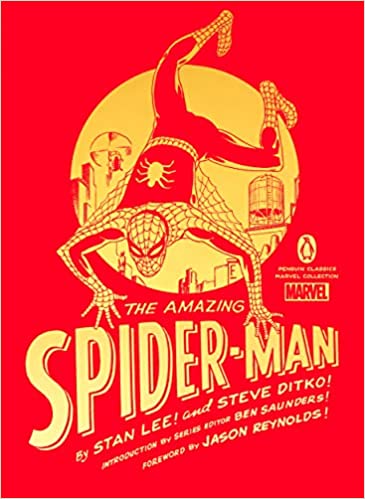
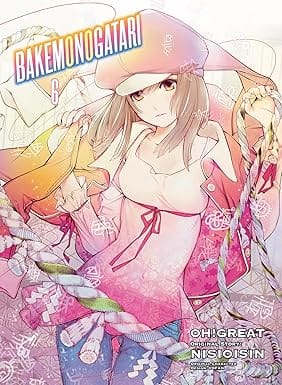
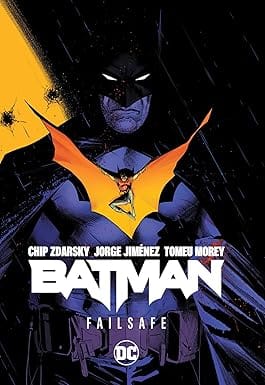
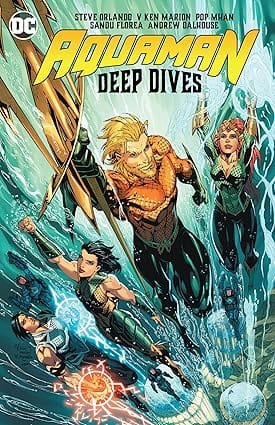

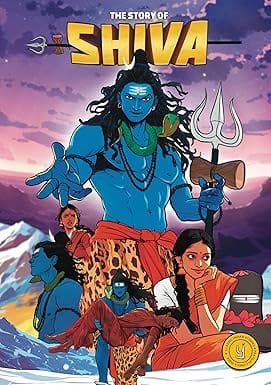
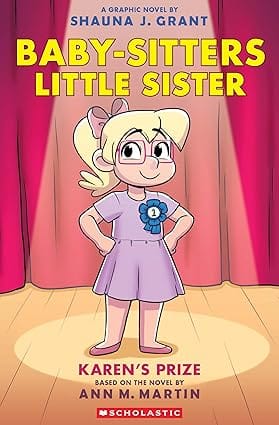
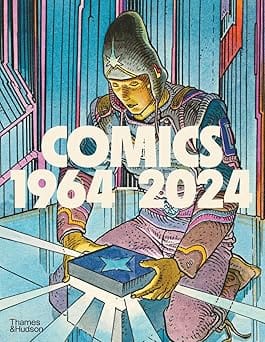
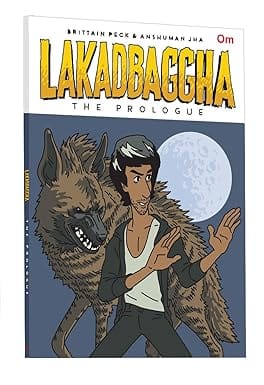
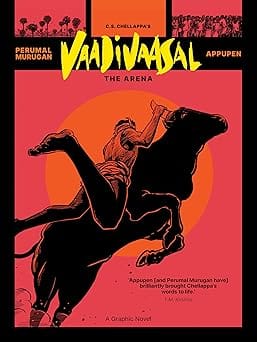
![Tokyo Ghoul Complete Box Set Includes Vols. 1-14 With Premium [paperback] Tokyo Ghoul Complete Box Set Includes Vols. 1-14 With Premium [paperback]](https://www.midlandbookshop.com/s/607fe93d7eafcac1f2c73ea4/67ebe31c7cc5b9fb7ed4bfdb/71phk5fcmsl-_sy342_-480x480.jpg)
